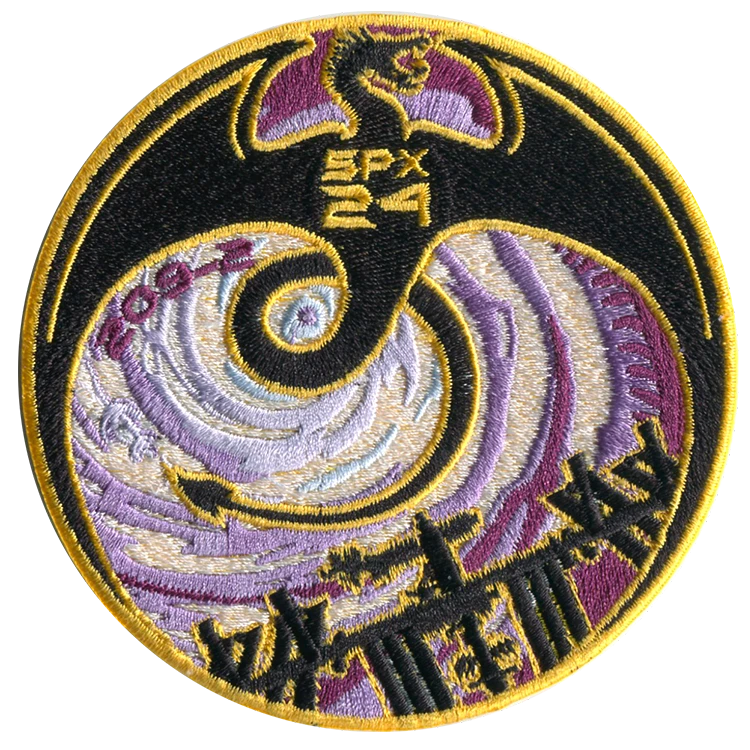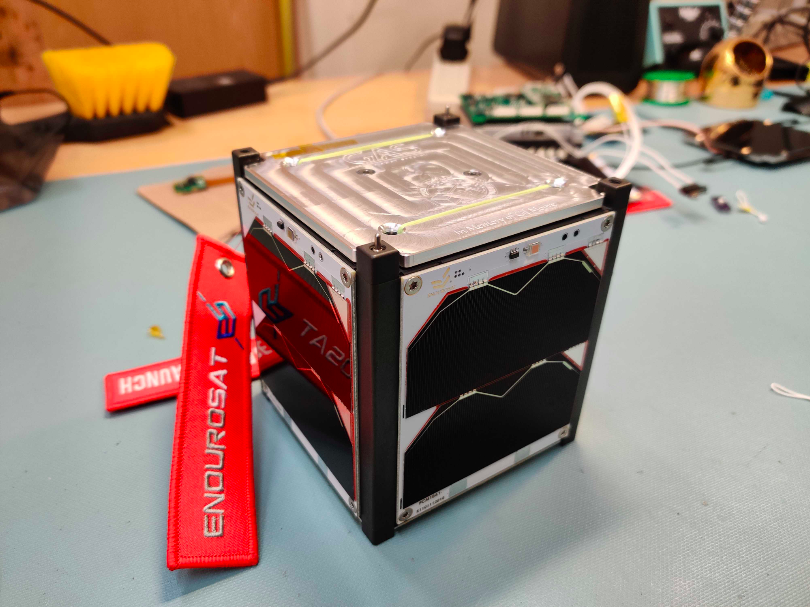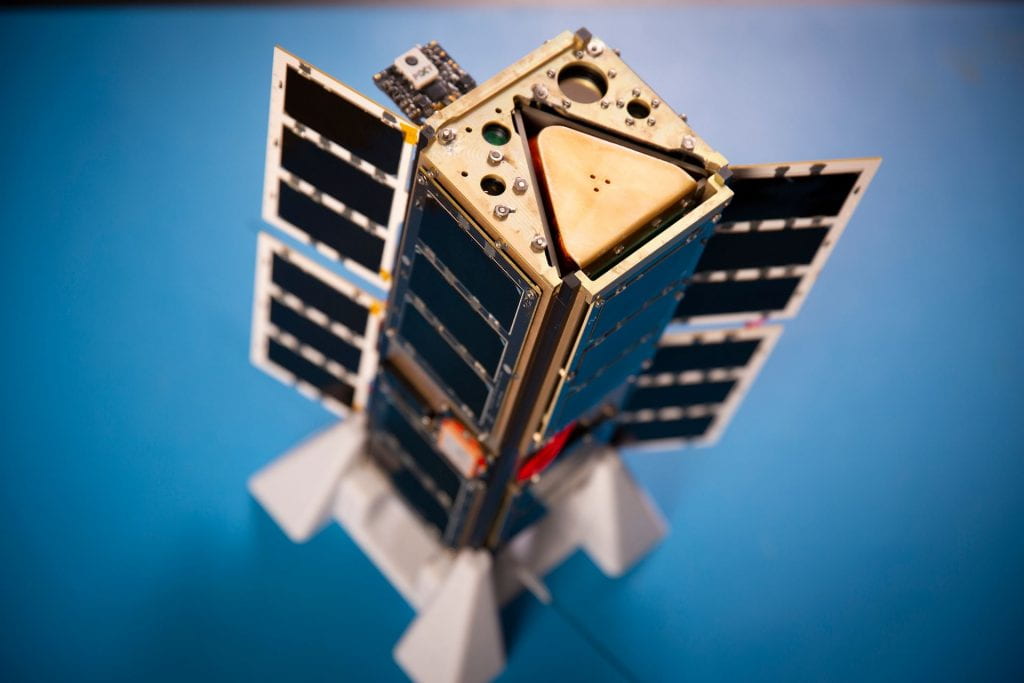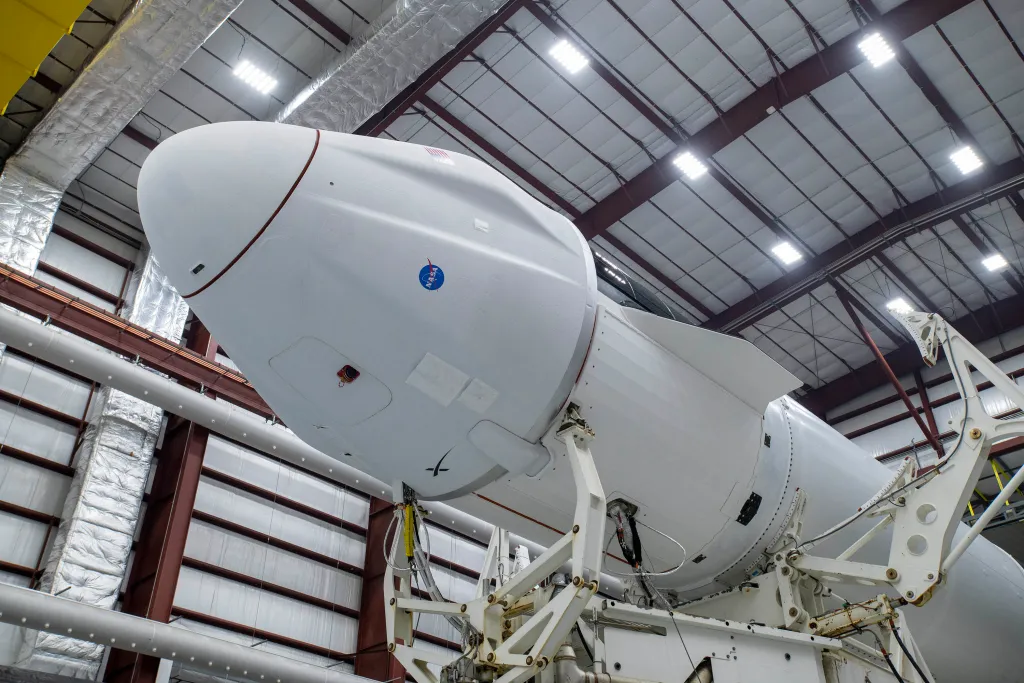Featured image credit: SpaceX
Lift Off Time | December 21, 2021 – 10:07:08 UTC | 05:07:08 EST |
|---|---|
Mission Name | Dragon CRS-2 SpX-24, a Commercial Resupply Service mission to the International Space Station (ISS) |
Launch Provider | SpaceX |
Customer | NASA |
Rocket | Falcon 9 Block 5 B1069 |
Launch Location | Launch Complex 39A (LC-39A), Kennedy Space Center, Florida, USA |
Payload mass | ~3,000 kg (6,500 Ib) of cargo |
Where did the spacecraft go? | Dragon C208-2 rendezvoused with the ISS, ~400 km low Earth orbit (LEO) at a 51.66° inclination |
Did they be attempt to recover the first stage? | Yes |
Where did the first stage land? | It landed on the Autonomous Spaceport Drone Ship Just Read The Instructions (JRTI) |
Did they attempt to recover the fairings? | There are no fairings on the Dragon 2 |
Were these fairings new? | There are no fairings on the Dragon 2 |
This was the: | – 2nd flight of Cargo Dragon 2 C209-2 – 4th SpaceX launch under the CRS 2 contract – 24th SpaceX Commercial Resupply Services mission – 31st launch for SpaceX in 2021 – 100th booster landing – 35th launch of any variant of Dragon – 30th visit of any variant of Dragon to the ISS – 134th Falcon 9 launch – 143rd SpaceX mission – 135th orbital launch attempt of 2021 (127th successful) – SpaceX’s final launch of 2021 |
Where to re-watch | SpaceX’s livestream NASA’s livestream |
How Did It Go?
Dragon CRS-2 SpX-24 (CRS-24) is a Commercial Resupply Service mission that launched on December 21, 2021 at 10:07:08 UTC heading to the International Space Station (ISS). SpaceX was awarded this mission by NASA in 2016 and launched CRS-24 on its Falcon 9 Block 5 rocket using a Cargo Dragon 2, C209-2. The rocket lifted off from Launch Complex 39A, at the Kennedy Space Center in Florida. CRS-24 marked the fourth flight for SpaceX under NASA’s CRS Phase 2 contract and the final launch for SpaceX in 2021. Onboard are ~3,000 kg (6,500 lb) of food, hardware, and scientific research.
At T-14 minutes, the weather predicted to only have a 30% chance to be favorable for launch, cleared up enough to allow SpaceX to launch CRS-24. Launch, stage separation, and Dragon separation were all nominal and Cargo Dragon C209-2 was on its way to the ISS approximately 12 minutes after liftoff.
On December 22, 2021 at 08:41, C209-2 arrived at the ISS and soft capture was confirmed. Soft capture is the first contact between the spacecraft and the space station. A “soft” capture ring hooks to its counterpart on the docking port and slowly retracts to bring in Dragon for hard capture. Just 10 minutes later at 08:51 hard capture was confirmed after the 12 hooks secured the spacecraft to the space station. After leak checks and pressurization of the vestibule (the small space between station and Dragon), the hatch to C209-2 was opened granting the crew access to the cargo inside.

CRS-2 SpX-24
The ISS is a lab like no other, so are dozens of new experiments that have been delivered there by SpaceX’ Dragon. Additionally to the research payloads and crew supplies, there are four CubeSats on board that will later be deployed as part of NASA’s ELaNa 38.
CRS-24 Research Payloads
Bioprint FirstAid Handheld Bioprinter
Developed by the German OHB Systems AG, the DLR (Deutsches Zentrum für Luft- und Raumfahrt – the German Space Agency) is sending the portable and handheld bioprinter to the ISS. This bioprinter is designed to work with the patient’s own skin cells in order to create a tissue-forming patch. This bandage would cover an astronauts wound and accelerate the healing process. The researchers’ hope is to be able to use this form of customized tissue bandages on future Moon and Mars missions where skin injuries would have to be treated quickly and effectively. Furthermore, they hope to be able to utilize it here on Earth for a more personalized treatment.

Monoclonal Antibody Crystallization (CASIS PCG20)
The pharmaceutical company Merck has launched multiple protein crystallization experiments to the ISS over the years. With CRS-24 they are building on a previous experiment that produced a highly uniform, concentrated crystalline suspension of the active ingredient of their cancer immunotherapy drug Keytruda®. The monoclonal antibody pembrolizumab, the active ingredient in Keytruda®, will again be grown in high-quality crystals of uniform size in microgravity, which will allow researchers to better analyze them in order to further improve manufacturing and drug delivery options for patients.
Right now, many of these drugs have to be administered by intravenous infusion, which takes up a lot of time and resources as patients have to see medical facilities where medical personnel has to treat them. Suspensions with high concentrations of uniform crystals of the monoclonal antibodies could potentially be used for easier drug delivery such as injections that can be administered in a doctor’s office or at home.
Turbine Superalloy Casting Module
Redwire Space, Inc. is launching their Turbine Superalloy Casting Module (Turbine SCM) on CRS-24. This small module is a technology demonstration with which Redwire Space hopes to manufacture single-piece turbine blisks (combination of blade and disk). Researchers hope to create more uniform microstructures that will improve mechanical properties in the superalloy parts as a result of them being produced in microgravity compared to similar parts produced on Earth. Turbine parts manufactured in that way could improve turbine assemblies in industries such as aerospace or power generation on Earth.

P&G Telescience Investigation of Detergent Experiments (PGTIDE)
Procter & Gamble Company (P&G) has developed a fully degradable detergent specifically for use in space named Tide Infinity. PGTIDE will study the performance of its stain removal ingredients and how stable the formula is in microgravity.
Astronauts on the ISS wear items of clothing multiple times before they change it, which PGTIDE will not necessarily effect, but it will be of significance for long duration missions to the Moon or Mars where regular resupply missions are not possible and astronauts will have to clean their clothes eventually.
Axiom Space
Axiom Space is launching three different payloads on board of CRS-24 in order to support their upcoming Axiom-1 mission, which is currently scheduled to lift off on February 21, 2022. The three payloads are:
- Ax-1 Fluidic Space Optics
- Ax-1 BioMonitor
- Ax-1 Holoportation Behavioral
These payloads will support future research done by Axiom Space’s private missions to the ISS.
ELaNa 38 CubeSats On CRS-24
ELaNa is an initiative that was proposed by NASA and is managed by the Launch Services Program (LSP) at NASA’s Kennedy Space Center. The main aim of this program is to collaborate with universities all across the US to design, manufacture, and launch research satellites into space. ELaNa brings university students closer to real space missions, giving them opportunities to dive in and get involved in the process from A to Z, from designing and assembling CubeSats, to launching and operating them.
Next to the scientific research payloads and crew supplies, there are also the following four CubeSats hitching a ride on Dragon:
- DAILI – Aerospace Corporation, El Segundo, California
- GASPACS – Utah State University, Logan, Utah
- PATCOOL – NASA’s Kennedy Space Center, Florida
- TARGIT – Georgia Tech Research Corporation, Atlanta, Georgia
DAILI
The Daily Atmospheric and Ionospheric Limb Imager (DAILI) is a 6U CubeSat developed and built by Aerospace Corporation with the goal of measuring the daytime density of atmospheric oxygen at an altitude of about 140 km to 290 km. The findings could help improve models of the upper atmosphere and broaden our understanding of its dynamics and how it affects satellites and space debris in LEO. Furthermore, they could contribute to a better understanding of weather and improve forecasts.
GASPACS

The Get Away Special Passive Attitude Control Satellite (GASPACS) is a small 1U CubeSat developed and built by Utah State University. Their primary mission is to deploy a 1 m long inflatable boom structure filled with UV curing epoxy and send back a clear picture of the deployed boom. The lightweight inflatable structure also serves the purpose of passively stabilizing the rotation of the satellite because of aerodynamic drag.
PATCOOL

The Passive Thermal Coating Observatory Operating in Low-Earth Orbit (PATCOOL) is a 3U CubeSat developed by students from the University of Florida. PATCOOL aims to validate the results of ground tests of a new surface coat that should provide a higher reflectance of the Sun’s radiant power compared to any other existing coating. At the same time, this coating will also provide far-infrared power emission. Four coin-like samples, of which two are coated with state of the art materials and the other two are coated with the new material, are connected to the main housing via thin Kevlar strings to minimize heat transfer.
TARGIT

The Tethering and Ranging mission of the Georgia Institute of Technology (TARGIT) is a 3U CubeSat designed and developed by students of Georgia Tech’s School of Aerospace Engineering. TARGIT’s goal is to test an imaging Lidar system that is capable of high detailed topographic imaging. Furthermore, TARGIT will demonstrate more new technologies such as active tether and inflation systems, a horizon sensor utilizing low-res thermal imagers, nano-carbon based solar cells, and numerous 3D printed parts.
CRS-2 SpX-24 Mission Profile
Dragon C209-2 separated from the second stage of the Falcon 9 Block 5 at ~T+12 min. After that, it performed a series of thruster firings to adjust its orbit to reach the ISS. The estimated schedule suggested that the spacecraft would arrive at the ISS one day later, on December 22, at ~09:30 UTC (04:30 EST). Dragon autonomously docked to the ISS’ Harmony module on December 22, at 08:41 UTC. Upon Dragon’s arrival, the crew proceeded with unloading the cargo.
Dragon C209-2 will spend around one month at the ISS. Its mission will end in late January or early February. After that, the spacecraft will travel back to Earth and will splash down under parachutes off the coast of Florida, returning valuable research and cargo to Earth.
Approximate Timeline
All times are approximate.
Pre-Launch
| Hrs:Min:Sec From Lift-Off | Events |
| – 00:38:00 | SpaceX Launch Director verifies go for propellant load |
| – 00:35:00 | RP-1 (rocket grade kerosene) loading begins |
| – 00:35:00 | 1st stage LOX (liquid oxygen) loading begins |
| – 00:16:00 | 2nd stage LOX loading begins |
| – 00:07:00 | Falcon 9 begins pre-launch engine chill |
| – 00:05:00 | Dragon transitions to internal power |
| – 00:01:00 | Command flight computer to begin final prelaunch checks |
| – 00:01:00 | Propellant tanks pressurize for flight |
| – 00:00:45 | SpaceX Launch Director verifies go for launch |
Launch
| Hrs:Min:Sec From Lift-Off | Events |
| – 00:00:03 | Engine controller commands engine ignition sequence to start |
| 00:00:00 | Lift-Off |
| + 00:01:12 | Maximum dynamic pressure (Max Q) |
| + 00:02:27 | Main engine cutoff (MECO) |
| + 00:02:30 | Stage separation |
| + 00:02:38 | Second engine start-1 (SES-1) |
| + 00:02:43 | First stage boostback burn begins |
| + 00:05:49 | First stage entry burn begins |
| + 00:07:38 | First stage landing |
| + 00:08:34 | Second engine cutoff-1 (SECO-1) |
| + 00:11:45 | Dragon separation |
What Is Falcon 9 Block 5?
SpaceX’s Falcon 9 Block 5 is a medium-lift launch vehicle that stands out among others for its partial reusability. By re-flying boosters and fairings, SpaceX not only cuts down the cost of space access, but also increases the reliability of the rocket. Block 5 is the final iteration of the Falcon 9 that is designed, manufactured, and operated by SpaceX.

The rocket consists of a reusable first stage, an interstage, and a second stage. Falcon 9 Block 5 can be flown with either a fairing or a Dragon spacecraft. On the SpX-24 mission, the Cargo Dragon C209-2 will be used to deliver research and other payloads to the ISS.
Falcon 9 Block 5 is about 70 meters (229.6 ft) in height and 3.7 meters (12 feet) in diameter. The vehicle’s structures are made of an aluminum-lithium alloy, which results in a total dry mass of 549,054 kg (1,207,920 lb). The rocket’s payload lift capacity to low-Earth orbit (LEO) is 22,800 kg (50,265 lb).
First and Second Stage
| First Stage | Second Stage | |
| Engine | 9 Merlin 1D engines | 1 vacuum optimized Merlin engine |
| Thrust Per Engine | 845 kN (190,000 Ibf), sea level 934 kN (209,971 Ibf), vacuum | 992 kN (223,100 lbf) |
| Specific Impulse (ISP) | 285 s, sea level 313 s, vacuum | 348 s |
The Falcon 9’s first stage consists of aluminum-lithium alloy tanks for propellants and four landing legs, which are stowed at the base and deploy just before landing. Nine sea-level Merlin 1D engines power this stage. The second stage also consists of tanks for propellants and is powered by a single vacuum optimized Merlin engine or MVac. The main difference between these two variations of the Merlin engine is that the latter has an expanded nozzle that results in improved performance in near-vacuum conditions. The second stage carried Dragon to its intended orbit allowing the spacecraft to rendezvous with the ISS.

The Merlin engine runs on rocket-grade kerosene (RP-1) and liquid oxygen (LOx), and uses a gas generator cycle. Falcon 9 uses helium to backfill the propellant tanks as RP-1 and LOx are being consumed by the engines during ascent.
The interstage connects the first and second stages of the vehicle and is responsible for their separation during flight. It also accommodates four hypersonic grid fins at the base. They help to orient the booster during re-entry.
The booster supporting this mission is B1069. The CRS-24 mission was its successful first flight.
| B1069’s missions | Launch Date (UTC) | Turnaround Time (Days) |
|---|---|---|
| Dragon CRS-2 SpX-24 | December 21, 2021 | N/A |
Cargo Dragon 2
The CRS-24 mission is the second mission to the ISS for Cargo Dragon C209-2. Its first mission was CRS-22, SpaceX’ second launch under the CRS-2 contract.
Cargo Dragon 2 is 8.1 m (26.6 ft in) in height and 3.7 meters (12 feet) in diameter. Compared to the original Cargo Dragon, the upgraded spacecraft can and will automatically dock to the ISS. The old version had to be manually berthed by the Canadarm2.

The Cargo Dragon 2 shares a similar design with the Crew Dragon spacecraft intended to carry astronauts to the ISS and back to Earth. However, there are some differences. The Cargo Dragon 2 does not have SuperDraco abort engines, nor a life support system since there will be no human passengers on board. In the pressurized section, the seats and crew displays have been swapped for cargo racks. The environmental control system has been also reduced both in size and complexity.
Overall, the CRS-2 SpX-24 mission’s success criteria will be successful deployment of the Cargo Dragon 2 to the dedicated orbit, its docking to the ISS, and recovery of the booster.






I only counted 29 SpaceX Dragons visiting the ISS in 30 attempts.
20 Dragon 1 missions (SpX-C2+ and CRS-1 through CRS-20 minus CRS-7)
5 Crew Dragon missions (2 demo and Crew-1 to Crew-3)
4 Cargo Dragon 2 Missions (CRS-21 to CRS-24)